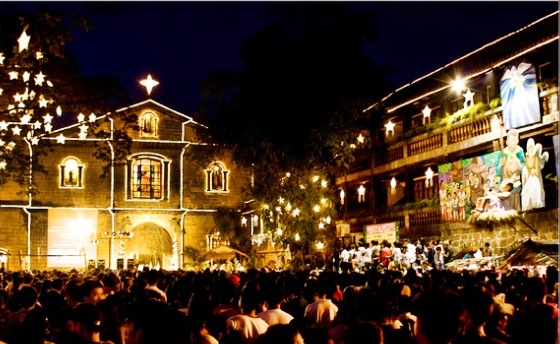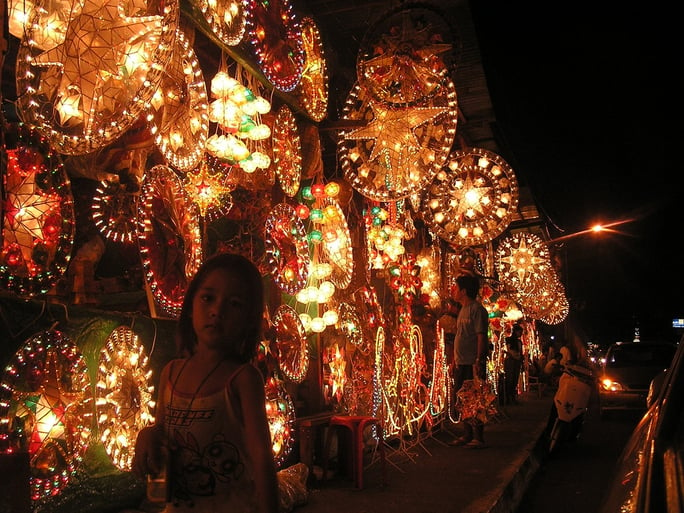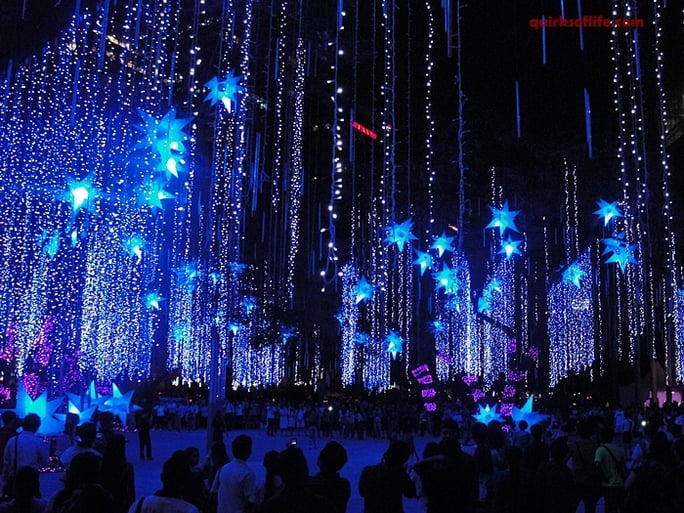 Ahh, December. Christmas is coming upon us once again. But for the Philippines, it arrived months ago—on the 1st of September, to be exact. That’s right. Filipinos have a penchant for celebrating Christmas way ahead of everyone else, and for celebrating it long after December has passed.
Ahh, December. Christmas is coming upon us once again. But for the Philippines, it arrived months ago—on the 1st of September, to be exact. That’s right. Filipinos have a penchant for celebrating Christmas way ahead of everyone else, and for celebrating it long after December has passed.
An overwhelming 86% of the Philippine population are Roman Catholics and 6% are Christians from other religions. No wonder Filipinos love Christmas so much. But aside from celebrating the birth of Jesus Christ, to the Filipinos, it also means coming together with loved ones.
Long before the month of December even starts, choirs both professional and impromptu already roam around neighborhoods, offices, and schools, singing Christmas carols with tambourines in hand and smiles on their faces. Back in the early years of Christmas in the colonial Philippines, carollers used to sing in Spanish, and carols were only sung inside the church. But as the years went by, the carols and carollers themselves made their way out into the streets, into neighborhoods, and even commercial complexes, delighting varied audiences with their enthusiasm.

A series of masses leading up to the main celebration on the 25th of December is famous among Catholics, who are perceived as avid lovers of the season. The tradition of Simbang Gabi is one that many Filipinos look forward to as the day of the birth of the Lord arrives. Simbang Gabi typically starts on the 16th of December up to the 24th. The final mass during Christmas Eve is called Misa de Gallo. Churches are usually decked in decorative lanterns called parol.
During the Spanish era, parols were traditionally just lamps that were used to guide church-goers on their way. Now, they are used as decoration and can be remarkably large and elaborate. Most are made of capiz shells and sport patterns that play on Christmas icons, most notably the star of Bethlehem. Events and contests are fairly common and often feature specimens that break the mold, employing unconventional motifs or materials. The only rule is: the brighter, the better.

After the Misa de Gallo, Filipinos typically spend the remaining hours of Christmas Eve with Noche Buena, a small feast to celebrate the coming of Christmas day. It typically features sweets made of rice, like bibingka and puto bumbong; ham and quezo de bola; and hot chocolate. Although each family does, of course, have their own unique traditions.
Filipinos are known for their love for their kin and kith, so naturally, they would all come together during the biggest holiday in their country. Christmas is synonymous with a gathering of all sorts, involving cousins several times removed, as well as family friends. Even neighbors join in on the fun, exchanging food and gifts with their fellow neighbors as a token of appreciation and camaraderie.

There’s also the Filipino version of the Secret Santa, called Monito-Monita. First, you and your friends need to settle on a budget for the gifts. A fairly low price is good to start with. Next, you will need to write down your name on a small piece of paper. You may choose to give yourself a codename and just indicate a few details about yourself to let the person who will pick you to choose a proper gift. Next, the group members will put the papers containing your names in a bowl, and each pick out one piece of paper. Remember not to tell anyone who you picked. The goal of this is to keep your identity and that of whoever you picked a secret. Whoever you have picked will be your Monito, if it’s a boy, or Monita ,if it’s a girl. Every week, you will be asked to give your Monito or Monita a gift within the budget you and your friends have agreed upon. The excitement will build every week, beginning at the first week of December, until the day to finally reveal yourselves arrives. The day of revelation can be done on Christmas Day itself, or during your own Christmas party celebrated on another day.

On Christmas Eve itself, gifts are exchanged between loved ones and friends. Whether it’s a small token of appreciation or a grand gesture to show you your worth to someone, everyone gives something to a person in their life whom they consider to be important and who they’re thankful for. Of course, in traditional Filipino way, the Ninongs and Ninangs also give ang pao to their godchildren—red envelopes filled with cash.
Decorations aren’t taken down immediately after Christmas. They can last well into January. The spirit of Christmas dies down in the slowest way in the Philippines. It’s probably because we all like getting that warm fuzzy feeling we get during the -ber months. But really, the ultimate gift one can ever hope to receive on Christmas, is the warm company of your loved ones all together. That’s probably the best way to celebrate Christmas, the Filipino way.

After that, it’s off to a new year! And with the new year come new holidays. Read on for an early look at the 2017 Philippine public holidays:

REGULAR HOLIDAYS:
January 1, Sunday - New Year’s Day
April 9, Sunday - Araw ng Kagitingan
April 13, Thursday - Maundy Thursday
April 14, Friday - Good Friday
May 1, Monday - Labor Day
June 12, Monday - Independence Day
August 28, Monday - National Heroes Day
November 30, Thursday - Bonifacio Day
December 25, Monday - Christmas Day
December 30, Saturday - Rizal Day
SPECIAL NON-WORKING HOLIDAYS:
January 28, Saturday - Chinese New Year
February 25, Saturday - EDSA People Power Revolution Anniversary
April 15, Saturday - Black Saturday
August 21, Monday - Ninoy Aquino Day
October 31, Tuesday - Additional special non-working holiday
November 1, Wednesday - All Saints Day
December 31, Sunday - Last day of the year
Looking to spend your Christmas with your loved ones? Let us handle your business concerns. Talk to us:



 Ahh, December. Christmas is coming upon us once again. But for the Philippines, it arrived months ago—on the 1st of September, to be exact. That’s right. Filipinos have a penchant for celebrating Christmas way ahead of everyone else, and for celebrating it long after December has passed.
Ahh, December. Christmas is coming upon us once again. But for the Philippines, it arrived months ago—on the 1st of September, to be exact. That’s right. Filipinos have a penchant for celebrating Christmas way ahead of everyone else, and for celebrating it long after December has passed. 










Comments